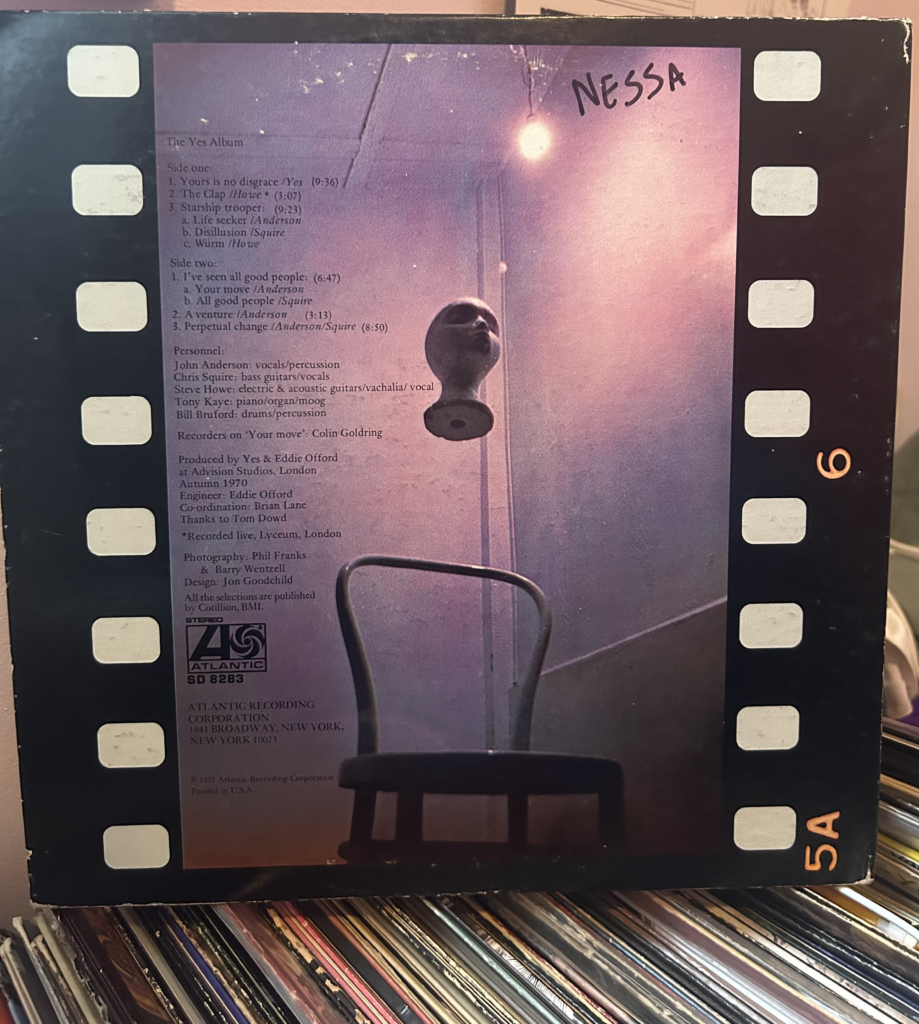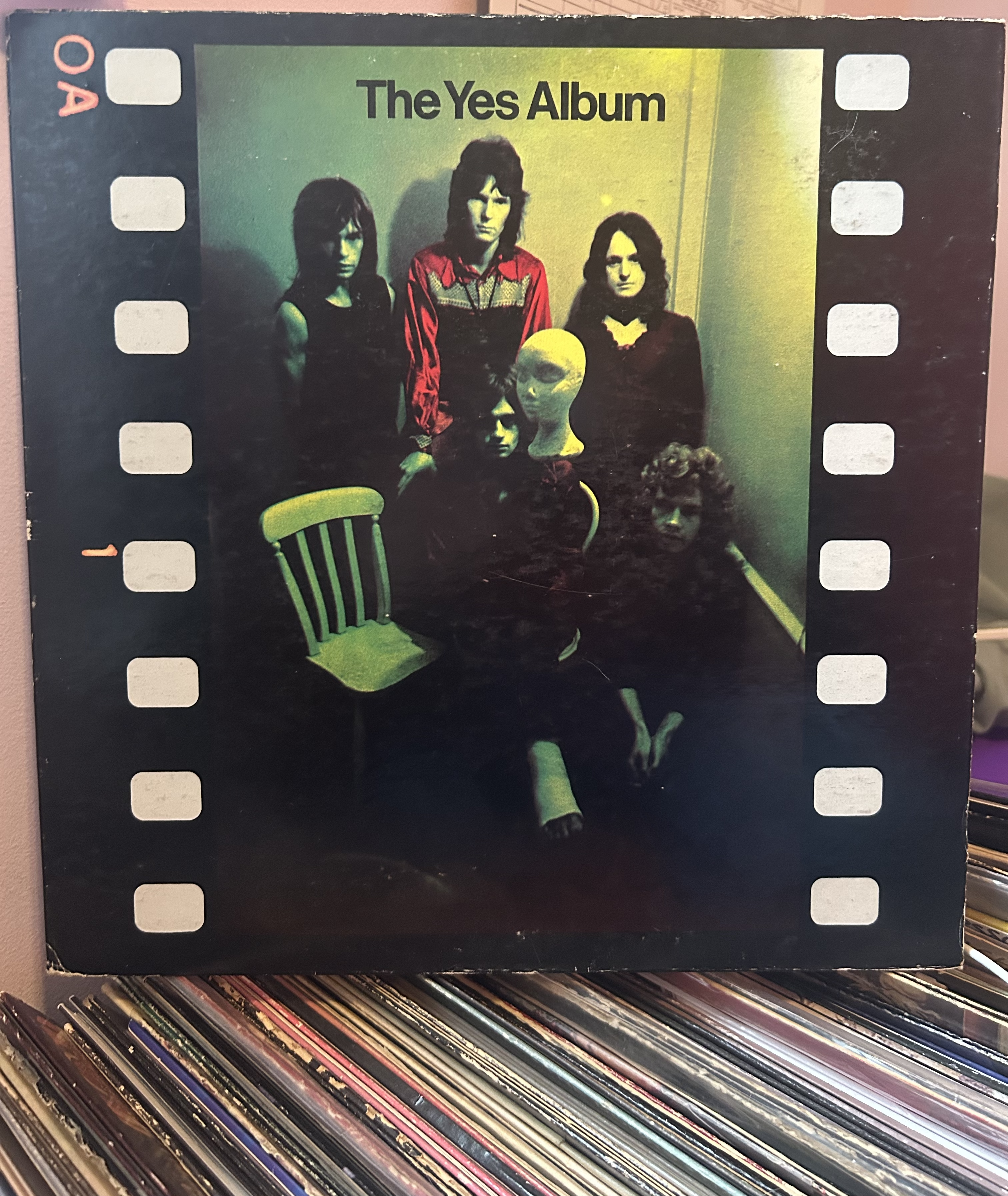(Pictured from back left: Steve Howe, Chris Squire, Jon Anderson) (Pictured from front left: Tony Kaye & Bill Bruford)
“The Yes Album” is the third studio album released by English progressive rock band, Yes, first hitting the sound waves in the U.S. on March 19, 1971! This exciting and experimental album was pure exposure to what the world would later know as progressive rock. Most, if not all, classic rock listeners believe this album is what started Yes, despite it being their third album.
So, what makes this album different? Well, the answers lie within the track list. Only having 6 songs that make up the entire album, “The Yes Album” exceeded expectations.
Having two famous singles on two different sides of the album, Yes meant strict business. “Yours Is No Disgrace” opens the album playing at 9 minutes and 42 seconds, already exceeding standard radio play time in the 70’s. It’s specially noted as one of the band’s top fan picks and even got the band to perform its entirety live on German television program, “Beat Club” which was dedicated to progressive rock.
Traveling onto the B-side of the album plays “I’ve Seen All Good People” at 6 minutes and 55 seconds, and was originally written as two parts. The first, “Your Move” was more acoustic, focusing on the vocals of lead singer, Jon Anderson, while the second “All Good People” switches the tone entirely to progressive rock.
The interesting part of “All Good People” was that the lyrics were more of a chant than a song, since the same two lines are repeated on a loop. “I’ve seen all good people turn their heads each day, so satisfied I’m on my way” has been one of the most well-known chants by Yes and has always gotten listeners into a good mood.
Outside of chants, this album is composed of all six original songs by the band. One song titled “ The Clap” was the only song not recorded in their London studio but instead was recorded live onstage at the Lyceum Theatre. The band decided to use this recording as an acoustic showcase for their new guitarist, Steve Howe.
One of the most interesting parts of the album is the cover itself, as the story behind it reminds us that if something can go wrong, it will. The photography was done by Phil Franks who was recruited by Friends Magazine to do album work for Yes. Franks shared his personal fiasco with the band regarding the photography session.
Franks shared that he was originally invited to do photography in Advision Studios in London, England and expressed his peeve as the fluorescent tubes turned everything green on film and using flash would cause distraction during recordings. He decided to deal with it, and moved forward with the green film. The band wanted to meet separately outside of recording so flash could be used.
The scheduled date resulted in Franks waiting around for hours just for the band to show up and say they had 30 minutes before they had to leave for their show miles away. The band claimed they arrived late due to Tony Kaye’s broken foot from a car crash just hours before the session. During the session fiasco, the flash would not develop properly in the studio so, Franks improvised and jammed everyone into a taxi and decided to take the session to his kitchen.
Franks decided to jam a thousand-watt photoflood light bulb in the single ceiling in the kitchen and hung a mannequin head that was picked up from a gutter on the trip to the house. Franks loaded his camera with infrared film, took shots of the band and said, “Nothing ventured, nothing gained”. Franks believed the photoshoot went horrible but became the band’s image for performances to follow with the mannequin head. When looking for new albums to dive into, “The Yes Album” has all the rave reviews to show how great it is even over fifty years after the release date. If you’re looking for a new sound to expand your music taste to, “The Yes Album” is a great place to start. With only 6 tracks, this album has all the potential to turn anyone into a fan of progressive rock!

